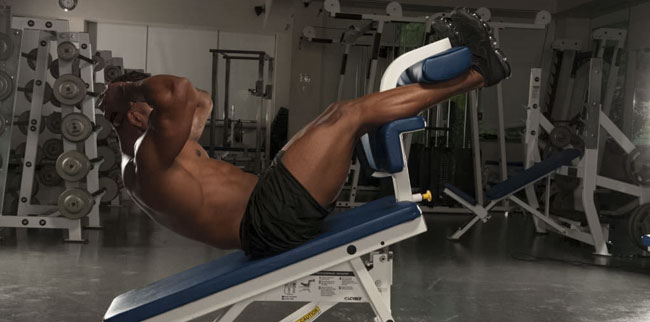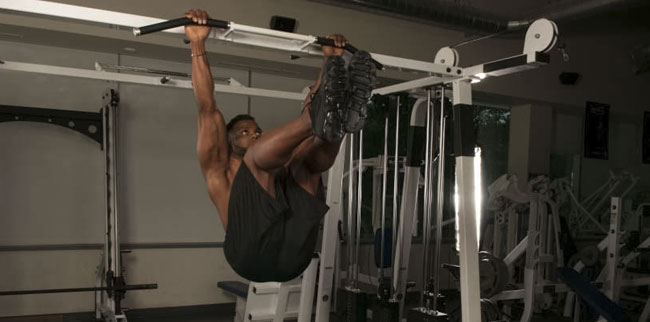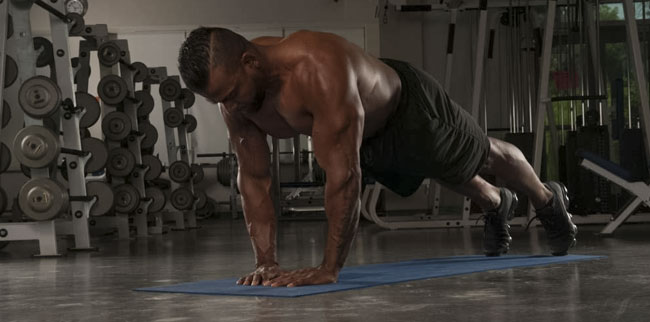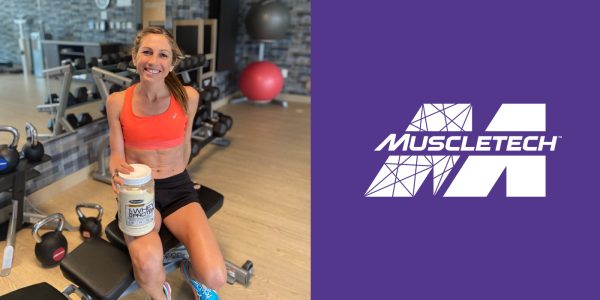It would take a miracle, it seems, to turn your musclebuilding workout into one that also helps you burn the fat you’ve always wanted to get rid of. That’s because it’s nearly impossible to chase two goals at the gym simultaneously: You won’t maximize size if you’re trying to lose weight, and you’ll be less successful getting ripped if you’re also trying to build muscle size. That’s why, for many folks, the answer is a hard and heavy workout followed by a necessary cardio session afterward to burn the fat. All of which makes for one very long workout.
Would you be interested in a faster, better way? Let’s look at some approaches to adjust your training in order to make your gym time far superior at blasting fat. We’ll also provide a sample chest, triceps, and abs workout, but you can apply the same principles to other body parts, too.
1. Adjust Your Mindset
As mentioned, you’ll be only quasi-successful if you try and pursue two opposing goals simultaneously. Losing fat and getting ripped requires a reduction in calories, while putting on muscle means a caloric surplus in your diet. While you’ll lose some strength (and size) as you get leaner, you’ll still look bigger when your goal is to get ripped. You’ll want, then to minimize any muscle loss that might accompany your efforts.
So don’t freak out when you can no longer bench your max and then decide to flip your workout back to one geared for mass. Instead, maintain the right mental outlook during this training phase (recommended for about two months) that your ultimate goal is to look more muscular by being more ripped.
2. Rely on Free-Weight Exercises That Are Multi-Joint in Nature

Multi-joint movements that engage a greater number of muscle groups are superior to single-joint exercises no matter your goal in the gym. Multi-joint exercises like bench presses, squats, deadlifts and rows, which engage two or more sets of joints and the muscles that attach to them, allow you to lift far heavier loads by comparison. This raises your metabolism both during and after your workout, a big factor in burning calories.
These types of movements have also been shown to more effectively trigger the release of favorable anabolic hormones like testosterone and growth hormone, which help burn fat and help you withstand a caloric deficit. With free weights, you’re required to use more stabilizer muscles to control the weights, again favorably burning more calories.
Sure, single-joint exercises have a place in your training, but they’re best placed toward the end of your training session.
3. Go Heavy, at Least Early in Your Workout

You might think that in order to do more work, you should back off on your loads and go for higher reps. The fault in this approach is that you take your foot off the musclebuilding accelerator. When you use heavier weights, the fibers are getting a signal to build or retain muscle mass. Using lighter weight for higher reps, conversely, doesn’t stimulate hypertrophy nearly as well. Maintaining muscle still requires a moderately heavy training stimulus, at least for the first half of your workout.
Remember, using heavier loads (about six reps to failure) has been shown to help raise metabolism higher and for longer periods than using lighter loads. The mechanism, called excess post-exercise oxygen consumption (EPOC), raises your metabolism for up to 24 hours post-workout. EPOC, by the way, is what makes high-intensity interval cardio training so much more effective than steady state training. You can achieve a similar effect with your weight workouts, too.
4. Increase Your Workout Density

If you’re like me, you do a set and then set your derriere atop a bench for a minute or two before completing another. While there’s nothing wrong with that style of training, that’s a lot of downtime in your workout. What if you instead were doing some kind of activity during that interval, especially one that didn’t have an adverse effect on the muscle group you were training? That’s where density training comes in. You add in work during your between-sets time without extending the length of your training session. Nobody wants to do long workouts when on a calorie-restricted diet.
On exercises during the middle and latter part of your training, introduce additional work segments in lieu of downtime. This increases the density of your workout, a style of training very fit men and women do to avoid lengthy workouts. Density training pairs your main weighted exercise with a bodyweight movement that’s timed, say for 30 to 45 seconds. It’s important that the second exercise does not use the same working muscles as the first, so it doesn’t interfere with normal clearing of the by-products of exercise metabolism that affect your recuperative abilities. So if you’re doing lower body, do density training with push-ups. Likewise, when training upper body, you can do bodyweight lunges or squats, for example.
After completing both segments, rest for only 30 seconds before repeating the superset for the requisite number of sets. This type of training will challenge your stamina and conditioning, but remember that just like muscle tissue, you can work on improving that over time, too.
5. Start Adding Intensity-Boosting Principles
Another way to increase workout density is to extend the sets you’re already doing past the point of initial muscle failure. You can do that with techniques like supersets and drop sets, and even rest-pause sets. All three are included in the sample chest, triceps and abs workout below.
Instead of dropping the weight when you hit failure, you continue to work with set-extension techniques, pushing your muscles harder and longer, thus keeping your heart rate elevated. Here’s a brief explanation of the techniques:
- When you combine two exercises for a target muscle, like chest presses and flyes, without resting between sets, you’re doing a superset. (You can also do supersets for antagonist, or opposing muscle groups, like biceps and triceps.) You rest only when you finish the last movement in the pairing.
- A drop set is when you take a set to failure and immediately reduce the poundage by about 25% and continue on with the set. You can do one or more drops as part of the set.
- When using rest-pause, you choose a load equal to about your eight-rep max (8RM) and do five reps, then rack the weight and rest just 15 to 20 seconds. You quickly resume again in this pattern until you can no longer achieve five reps. The idea is to do about double the number of reps with a heavy weight that you could normally lift for a single set. Avoid movements like seated overhead dumbbell presses or squats that take a lot of time and effort to get in and out of the start position.
6. Finish Your Weights with a Burn
You typically aim for a deep muscle pump on your last exercise, which affects metabolic stress, a mechanism linked to hypertrophy. Higher-rep sets work especially well here, but you can amplify the efforts by engaging in techniques like FST-7 or cluster sets, keeping rest times limited.
You’ll get a bigger bang for your buck by choosing a machine multi-joint exercise. Machines are especially useful when you’re highly fatigued and won’t have to focus on balancing the weight, whereas multi-joint movements are better for engaging a greater amount of muscle mass while providing a more significant boost to that post-workout metabolism driver EPOC.
With FST-7, choose a weight you can do for 10 to 12 reps. You’ll complete 7 sets – each to failure – but you’ll take only a 30-second rest between sets. If your reps fall off, simply reduce the weight. With cluster sets, you do a movement for time, say three minutes. You do as many reps as you can with your 12RM, rest for 15 seconds and continue on for the allotted time.
7. Do HIIT Training for Cardio

To increase the gap between the calories you consume over those you burn, cardio may be required. But the days of long sessions of boring cardio are over.
High-intensity interval training, or HIIT, replaced steady-state training years ago because it burns more calories in less time and also has a much bigger impact on EPOC. After a warm-up, alternate all-out sessions on the treadmill or elliptical (outdoors you can do sprints or stairs), say, for 30 seconds, with very slow recovery intervals (30 seconds or longer, depending on your level of conditioning). Excluding the warm-up and cool-down, HIIT sessions can range from 15 to 25 minutes.
In just a few weeks you’ll make noticeable improvements in cardiorespiratory fitness and muscular strength – yes, strength, as the protocol requires intermittent anaerobic activity. Just remember, this isn’t endurance activity, so focus on the short, all-out bursts with ample recovery between segments.
Sample Chest, Triceps, Abs Workout
Here’s a fairly advanced sample chest, triceps and abs workout that incorporates many of the training tools described above. Make sure you incorporate a training split that allows ample rest days. A two-on/one-off split is ideal. On off days, do HIIT cardio training, about twice a week. If you want to include more cardio sessions following the weights, make those steady state.
Beginners and intermediates should dial back the volume and intensity, especially when first starting a workout like this. Remember, this workout focuses on increasing your metabolism, helping you look more ripped, but you’ll see cardiorespiratory and health benefits as well.
Workout Guidelines
- Doesn’t include warm-up sets. Do as many as you need, but never take warm-up sets to muscle failure.
- Choose a weight so that you reach muscle failure by the target rep listed.
- On the first exercise only, rest 90 to 120 seconds between your heaviest sets. On all other sets, limit rest to 30 to 45 seconds. You may have to adjust all loads downward based on accumulating fatigue and shorter recovery.
- Modify this sample workout based on your level of ability.
| Exercise | Load | Set/Reps |
|---|---|---|
| 1. Barbell Bench Press | 8RM | Using rest-pause, do as many segments of 5 reps as possible, resting only 20 seconds in-between, until muscle failure. Rest 120 seconds and repeat 2 more times. |
| 2. Incline Dumbbell Press* | 8RM | 1 set to failure |
| 3. Push-ups* | AMRAP, resting 45 seconds after each superset and repeating 2 more times | |
| 4. Seated Decline Machine Press* | 12RM | 1 set to failure, reducing the load by about 25% and continuing the set again to failure |
| 5. Bodyweight Lunges* | 30 seconds work, then rest 45 seconds and repeat 2 more times | |
| 6. Seated Triceps Dip Machine | 8RM | 3 sets to failure, reducing the load by about 25% and going to a second point of failure on each set. Rest 60 seconds and repeat 2 more times. |
| 7. Leaning Overhead Cable Extensions with Rope* | 10RM | 3 sets to failure |
| 8. Pressdowns with Rope* | 12RM | 3 sets to failure |
| 9. Hanging Leg Raises | 1 set of AMRAP in 4 minutes with 15-second rest intervals; switch to knee raises if this is too difficult | |
| 10. Machine Crunches | 12RM | Using rest-pause, do as many segments of 5 reps as possible, resting only 20 seconds in-between, until muscle failure. Rest 120 seconds and repeat 2 more times. |
* Superset
By Bill Geiger, MA









